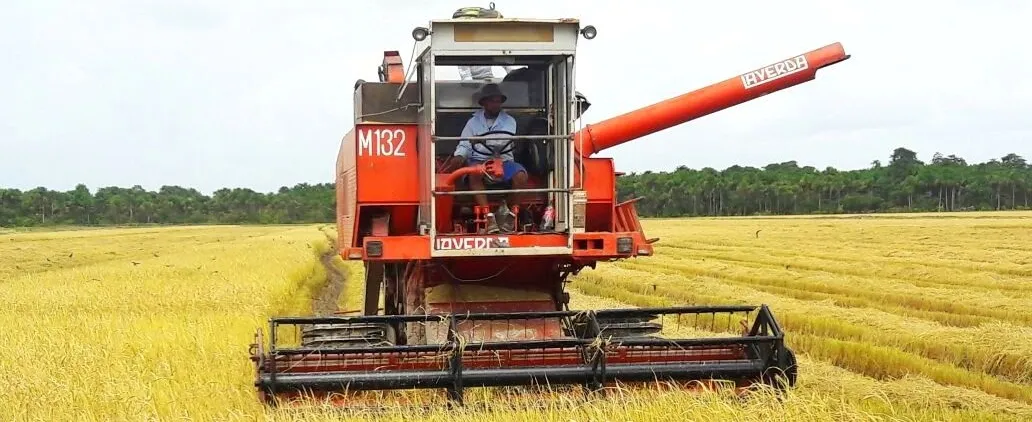Guyana is on track to achieve above-average paddy production in 2024, according to the latest report from the Global Information and Early Warning System (GIEWS) on Food and Agriculture. The report highlighted a series of favourable agricultural conditions that are expected to result in high yields and substantial rice exports, positioning Guyana for a strong agricultural year.
According to the report, the 2024 agricultural season is shaping up to be a productive one for Guyana, particularly in the eastern coastal regions where paddy farming is most prevalent. The second paddy crop, which constitutes roughly half of the annual production, is currently at the vegetative and flowering stages. Crop conditions remain favorable despite a period of dryness between March and April. This dry spell coincided with the harvesting of the first crop, but timely rains in May and June have replenished soil moisture and supported planting operations.
With planted areas estimated to be above average, largely due to favorable weather during the planting season, the outlook is positive. The report anticipates that even though rainfall is expected to be below average in August, the impact on yields will be minimal. This is because the maturation stage of the crops, which occurs during this period, is less vulnerable to dry conditions.
Guyana’s annual paddy production for 2024, combining both the first and second season crops, is forecasted to reach an above-average level of 1.07 million tonnes. This projection is attributed to the larger sowing areas and higher-than-average yields observed so far.
It said rice remains Guyana’s most significant agricultural export. On average, the country exports about half of its annual rice production. Reflecting the anticipated increase in production, rice exports are also expected to be above average for the 2024 marketing year, which spans from January to December. This forecast is bolstered by the projected surplus resulting from the robust harvest.
The GIEWS report underscored the importance of continuous monitoring and strategic planning in achieving these agricultural successes. The report was prepared using a variety of data and tools, including the FAO/GIEWS Country Cereal Balance Sheet (CCBS), Food Price Monitoring and Analysis (FPMA) Tool, and Earth Observation for Crop Monitoring.
These resources it said provided comprehensive insights into the current and projected states of agricultural production and food security.
The anticipated above-average production and export levels have significant implications for both food security and the economy in Guyana. High production levels ensure adequate food supplies, contributing to domestic food security. Meanwhile, increased exports are expected to bolster the national economy by generating higher revenue from rice sales on the international market.
The GIEWS report serves as a critical tool for policymakers, farmers, and stakeholders, providing the necessary data and insights to make informed decisions that support continued agricultural growth and stability.











